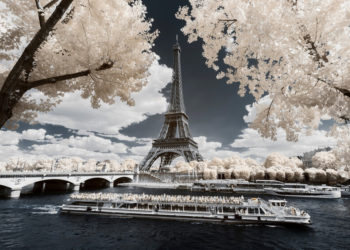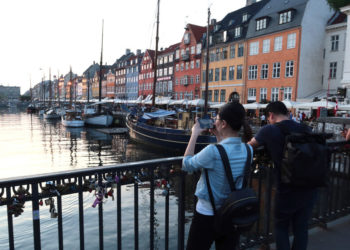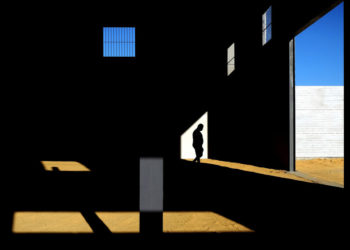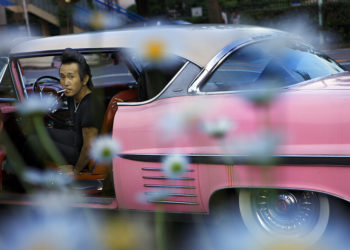home
>
Blog
>
Photography
>
Law of reciprocity: master the light that enters through your camera’s sensor
Law of reciprocity: …
Do you know what the law of reciprocity in photography? If you are just starting to take your first photos, it is likely that some may come out a little dark or, quite the opposite, so overexposed to light that they appear burned.
But don’t worry, practice makes perfect and understanding how the reciprocity law in photography is the first step to become one 💪. Throughout this article, you will see what this law is about and you will learn to master it, you will understand what the exposure triangle is for and you will see in depth the elements that compose it.
Have your camera at hand, because from today you will dominate it 📸.
What is the law of reciprocity in photography?
Photography, like any discipline, has a technical and specific language that must be known to understand what is being talked about when making a production. In this article we will explain what the reciprocity law In the photography.
To take any photo, we must talk about the concept of exposure in photography, which is the amount of light that the camera sensor receives to remove one. This amount will vary depending on two factors:
➤ Overexposed: the image is very bright, going white. Much information is lost in the white sectors (also known as burned). Here you will have positive values.
➤ Underexposed– The photo is dark in several places, causing information to be lost. Here you will have negative values.
Both the opening As the weather combine to give correct exposure. The intention is to ensure that the information contained in the camera is balanced within the range that we intend to capture.
The formula of the reciprocity law in photography it is as follows:
Exposure = Intensity (I) x time (T).
Exposure in photography is the basis for taking a good photo. If the exposure is not done correctly, you can have two results:
- Overexposed: The image is too bright, going white. Much information is lost in the white sectors (also known as burned). Here you will have positive values.
- Underexposed – The photo is dark in several places, causing information to be lost. Here you will have negative values.
From this point it begins to operate the law of reciprocity, which is responsible for specifying that the exposure level of a photograph is proportional to the amount of light that falls on the sensor.
The reciprocity law in photography states that if you increase the aperture and intend to maintain the same exposure, you must reduce the time variable to the same extent, but in the opposite direction.
For example, if you decide to double the opening, you should reduce time in the middle so that the exposure remains the same. The same happens, in reverse if you decide increase time, you will need to reduce the aperture.
Now that you know that aperture and time determine how much light reaches the sensor, we must talk about the sensitivity that the latter has, that is, the ISO. But to introduce this term, we will first see how these three concepts are related in the exposure triangle, a key concept to understand the law of reciprocity in photography.

Source: Freepik
What is the exposure triangle?
To accomplish with the law of reciprocity, you must have a balanced exposure triangle. So how do you capture light on a camera? In relation to this, you should know three elements that affect each other all the time when you expose. These three elements make up the exposure triangle.
What is the exposure triangle In the photography? It is the combination or balance between the aperture of the diaphragm, the shutter speed and the ISO. You should take into account these three parameters, since, depending on the circumstance and the light, it will be necessary to make adjustments through a combination of values.
Let’s develop these concepts in detail.
ISO
As we said earlier, the meaning of ISO in photography it is nothing more than the sensitivity of the camera sensor when it comes to capturing light. Our professor Juan Manuel Castillo, is his course “Audiovisual language from scratch”, says that:
“In ancient times, cameras did not have electronic sensors with chips instead, they had a role with a chemical liquid with a certain sensitivity already fixed to light. We can define the ISO, as the modern version of this liquid. Its value normally starts at one hundred and it can be increased, the higher the number the more sensitive the camera becomes and the more light you capture ”.
Juan Manuel Castillo continues by explaining that the only problem that can occur in case of raising the ISO, is that the take has noise.
What is it called noise In the photography? We say that a photograph has noise when you can see a certain texture in the image, as if it were pixelated.

Source: Photography for Beginners
Diaphragm
This concept is usually represented by the letter “F”And it is elementary for the reciprocity law is fulfilled. The diaphragm scales they usually have values ranging from 0.8 upwards. The smaller the number, the shallower the depth of field.
The depth of field in photography it is the part of the frame that is in focus. Having a low numbered aperture creates an effect that you must recognize in any photographic piece.

Source: Dzoom
Regarding depth of field, Juan Manuel Castillo explains the following:
“… the photograph that has a 1.8 aperture has a short depth of field, so you can see how the character is in focus and the background is not. The photograph with an aperture of 22 has a very wide depth of field, so you can see not only the character, but also what is behind it ”.
When using a closed diaphragm in photography, the shallower the depth of field and the greater the light entering the camera. That is, low aperture numbers like 1.8 will allow for lots of light, while high numbers like 22 will allow for low light.
Shutter speed
This is the third element to take into account so that the exposure triangle is balanced and, therefore, the law of reciprocity is fulfilled. The shutter speed in photography refers to the speed with which the camera lens blinks when taking a picture.
The shutter speed The camera speed is usually measured in fractions of a second, so they are usually numbers like 1/50, 1/100, 1/1000, or something else.
Juan Manuel Castillo explains that, in photography, a high shutter speed helps us capture fast-moving objects such as animals or adventure sports.
On the other hand, a shutter speed Low can help us draw light from where there is none, as in star photography. In these cases, the shutter speed can be very slow and it may take several seconds to take a single photo.
An example of shutter speed It is usually reflected in photographic exercises that consist of taking pictures of falling water, since the shutter speed can freeze the moving water.

Source: Sebastian Cava
These three elements converge with each other. If you change the value of one, so that the reciprocity law is fulfilled, you will have to compensate it with another in your camera configuration.
Perhaps incorporate all these concepts that explain how the exposure triangle and understand how the reciprocity lawThey may sound a bit complicated at first, but little by little you will be able to integrate them into understanding photography and using the camera so that you can have more control over the type of photos you take.
Since we talked about the use of the camera, we will see what the practical part of the camera consists of. reciprocity law.

Source: Freepik
Do you want to start taking photos from your home? Download this free guide to building your home photo studio!

Step scale in photography
While all the theoretical explanation of the reciprocity law It can be overwhelming at first, with practice it will become easier for you to understand. This is because the cameras have a exposure meter own that can guide you through the process of taking pictures.
In it exposure meter Exposure values are displayed, from negative values, indicating underexposure, located on the left, to positive values, indicating overexposure, located on the right. In the middle is 0, which represents the correct exposure. Each of the thick lines, which have a whole number above them, represent a light path.

Source: Kelvin degree
If you wonder what a light pass In the photograph, we will tell you that when we talk about going up one step, it means increasing the entry of light, while going down one step means reducing it.
The steps of light They do not always have to be complete, the thinner lines in between the numbers represent fractions. It should be noted that each camera is a world and, therefore, the exposure can vary by complete steps, by half or even by thirds.
Each time you use the corresponding wheel (or button) to make a modification of the three basic parameters, you will be raising or lowering a light step or a fraction. Remember that, for the reciprocity law in camera, you have to compensate for a change in one variable with the same change in the opposite direction in the other.
It is usually recommended to set the camera to work with full steps in order to avoid mistakes. However, there is no way to configure the camera so that the photograph is perfect and works in every situation that you are going to use it. If you always take the same types of photography or always record the same videos, you will pick up habits and that will help you to have a photographic style.

Source: Freepik
Exercises of the law of photographic reciprocity
Now that you have a more general notion of theory and practice, let’s look at some exercises to practice the law of reciprocity where you must adjust the values in relation to the original proposed exposure.
Original Exposure: 1/125 – f / 5.6 – ISO 400
- 1/60 – f /? – ISO 400
- one/? – f / 11- ISO 400
- 1/500 – f / 5.6 – ISO?
Remember that, for all these exercises as examples of the reciprocity law, it establishes that any change made in one of the variables must be compensated with an equal change, but in the opposite direction, in another of them 😉.
Answers:
- f / 8
- 1/30
- ISO 1600

Source: Freepik
If you made it this far, you should already have a more advanced notion about what reciprocity law In the photography. Now you can delve into technical details that involve the study of this art. Remember that the reciprocity law It will help you find balance in your exposure by adding or subtracting light from the image you want to capture.
One last recommendation before finalizing is that you investigate well about your camera on the internet. Remember that each camera is different and knowing it thoroughly will help you have more control over it. If you want to deepen your knowledge, Crehana has a wide variety of online photography courses for you to become an expert.
I wish you luck in your next productions 🙌.






![📷What is Boudoir photography? [2021]](https://big-photography.com/wp-content/uploads/2021/04/fotografia-_boudoir-75x75.jpg)

Discussion about this post